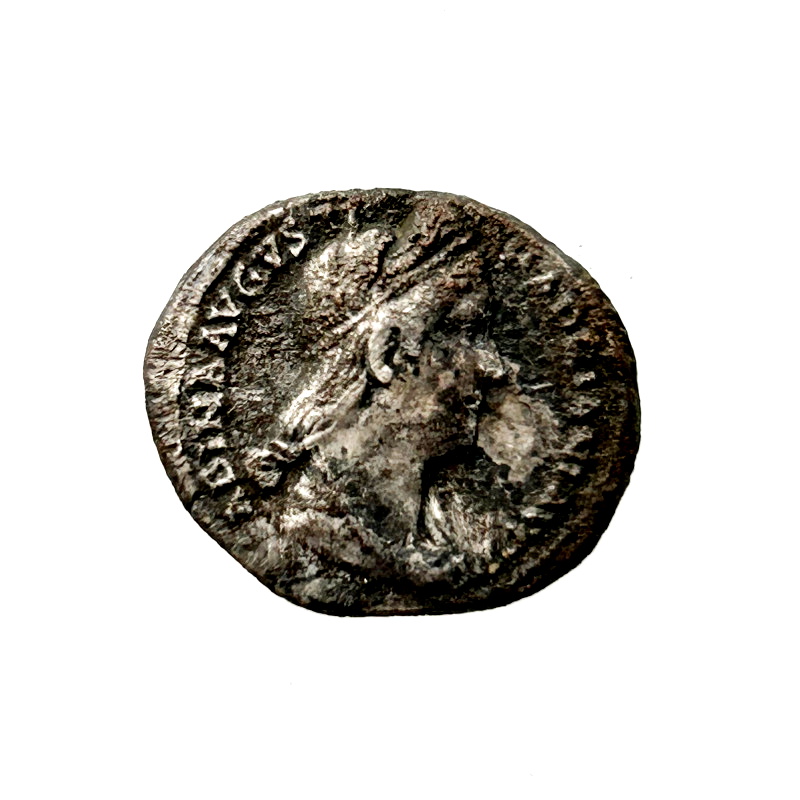
Published at 26th Oct 2023
Modified at 26th Oct 2023
Collecting Ancient Roman Coins Part III: Dating.
Collecting Ancient Roman Coins Part III: Dating.
 How to date Roman coins.
How to date Roman coins.
When you’ve identified a coins issuer, the next step is to find out as much as possible to determine the date of minting. The Emperor’s reigning years are a good start, but often this can be refined.
The Emperor’s official name may have enough clues to help you in this task. On some occasions it’s possible to narrow this down to a particular month. Other examples may only permit a longer period of time, but it's better than nothing.
Every part of an emperor’s formal title relates to a period of time or specific events. How this title varies is a clue to which period the coin is from.
As an example, let’s look at one silver denarius of Septimius Severus, 193-211.
On one side (the Obverse), the head and the legend L SEPT SEV PERT AVG IMP X. On the other side (the reverse) P M TR P V COS II P P.
The name starts with the formula IMP CAES, but here it can be assumed without being present.
The letter L is the standard abbreviation for Lucius, the first name of the emperor, and SEPT SEV for Septimius Severus. PERT is the abbreviation for his adoptive father, Pertinax, emperor for 63 days in 193. AVG means Augustus and it represents his title taken in 193, at the beginning of his reign.
IMP is of interest as it means Imperator. Imperator was his first name but it also indicates a function, similar to the general (or better said fieldmarshal), a title given to a soldier after a great victory. The first Imperial title is taken at the moment of rising to power and after this moment it can be given frequently. Septimius' tenth imperial title was taken in 197 and before 198, his eleventh imperial title.
PM means Pontifex Maximus and it is a title taken in 193 and kept until his death in 211.
TR P V means his fifth tribunate, started at 10 december 196 and ended at 9 december 197. The next day he started his sixth tribunate.
COS II means consul for the second time. The first one took place in 194 (actually in the year 189 he was consul suffectus or temporary, a secondary function) and the second in 194. The third started in the year 202 so by this title, the coin is minted between 1 january 194 and 31 december 201.
PP stands for Pater Patriae, the father of the country, and this title was taken in 193.
When you combine all this information, it gives a fairly precise date, almost as precise as modern coins minted with a date on them. This example was minted between 197 and 198.
As mentioned before, the absence of some elements can give some clues. For example, Septimius took the title Parthicus in 198. The absence of this title means that the coin is minted before 198. Or after 202, his name starts as SEVERVS PIVS AVG…. that can also be a dating clue.
All this information is a lot to remember, but with time, experience and references, it will become easier. Below are a few hints and tips for quickly narrowing things down;
From Augustus to Trajan, emperors didn’t have beards, except for Nero who appeared with whiskers.
First century coins, especially from 14 - 69 CE, portray busts with long necks and no clothes or robes.
The Flavian dynasty (69-98, Vespasian, Titus, Domitian) coins are easy to identify due to the rounded heads and wrinkles.
From Trajan onwards, the emperor is usually depicted with clothes or military armour.
From Hadrian onwards, most, but not all, emperors are bearded.
Shop for Roman Coins Here Coins-Auctioned.com

Search the Coin Encyclopedia
Related Auctions
Related Articles
Why Do People Collect Coins? Collectors buy and collect coins for personnel pleasure and enjoyment or for an enjoyable investment. In late 1980s to early 1990s coin collecting was not so popular but now there is a re insurgence in collecting coins.
10th Jun 2009
Silver has been used in coins for centuries. The ancient Romans made silver coins for the Roman Empire but only Rome was allowed to make silver coins and all the countries that were made part of the roman Empire could only produce bronze, not silver coins
24th Apr 2018
From time to time you will come across an ancient coin with a hole on it. Coins that were holed in ancient times are intriguing. Why was this so?
12th Mar 2018
Latest Articles
Washington quarters are 25-cent US coins issued since 1932. The original obverse remains, with dozens of varieties and new reverses. Learn the history, types, key dates, and errors on the iconic coin!
4th Nov 2024
Walking liberty half dollars are 50-cent American coins circulated from 1916 to 1947. The iconic design has been featured on the silver eagle bullion since 1986 and remains sought-after by collectors.
7th Oct 2024
Standing liberty quarters were circulated US coins issued from 1916 to 1930 as part of the Renaissance of American Coinage. Learn the values, varieties, and stories of standing liberty quarters!
9th Sep 2024
Article Categories
Collection of articles providing lots of useful information on coins through the ages.
30 Articles




